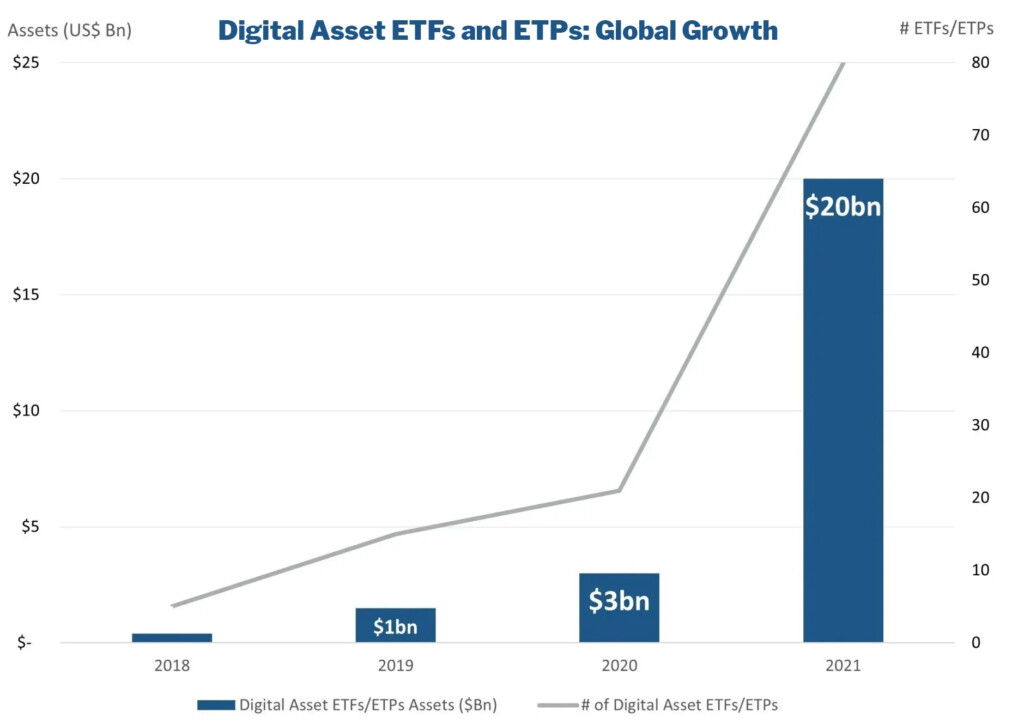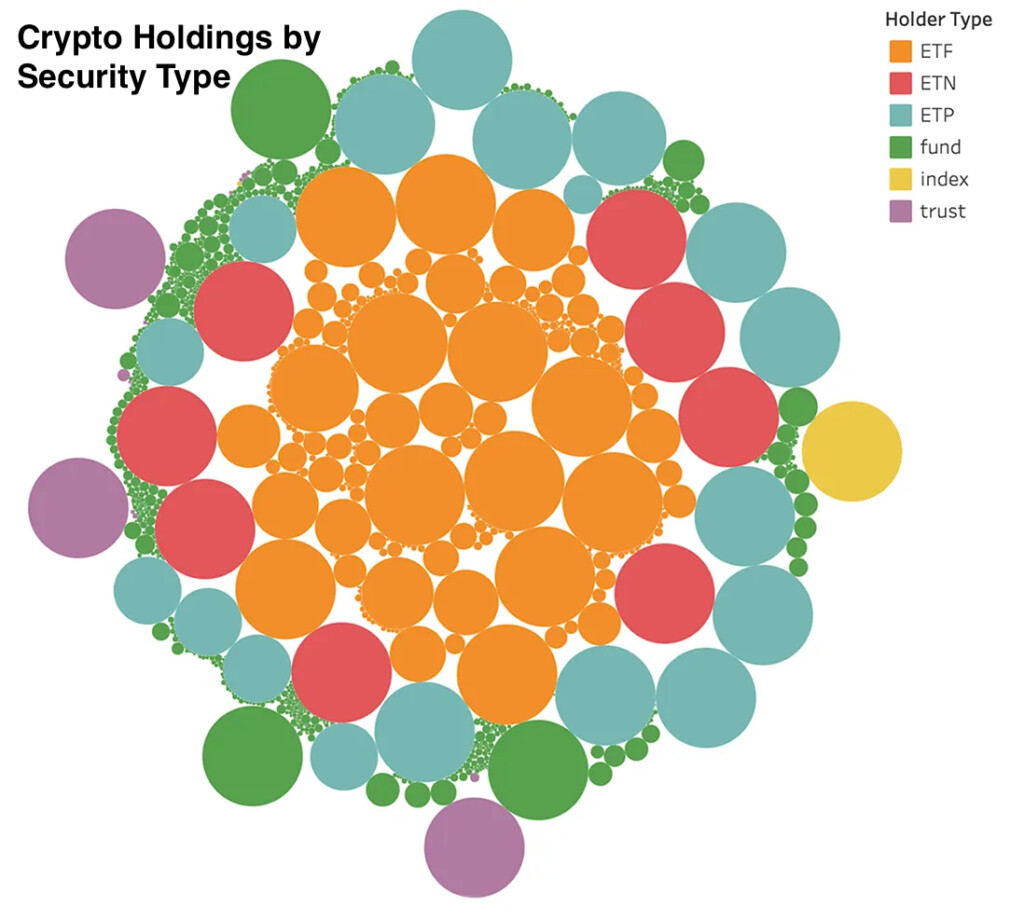Cryptocurrencies, despite their volatility, have become commonplace in the portfolios of both retail and institutional investors. More and more securities have crypto holdings. But do you fully understand how much exposure you really have to crypto?
DIH now offers data that links securities worldwide with their crypto holdings. The data covers exchange-traded products, mutual funds, and listed equities that hold crypto assets.
The Crypto Holdings of Securities in Your Portfolio Can Cause Risk Management Nightmares.
No matter which side you take in the cryptocurrency debate, it is a fact that the financial markets have embraced crypto assets. Listed securities have dramatically increased their crypto exposure despite their extreme volatility. It is this high volatility that is the problem – you need to know to what extent securities are exposed to crypto assets so that you can manage their risks.

When you look at which types of securities hold crypto assets, you can see exchange-traded funds (ETFs) lead the way. DIH’s crypto exposure data also includes exchange-traded notes (ETNs), unit investment trusts (UITs), mutual funds, and listed equities that hold crypto assets. We cover all global regions.

Features & Uses of Crypto Exposure Data.
Our crypto exposure data includes:
- Crypto Surveillance – Daily screening for securities that hold or track digital assets/futures
- Crypto Holdings – Ratio and amount of digital asset holdings for exposed funds
- Crypto Price Correlation – Level of price correlation between an exposed security and Bitcoin/Ethereum (uses the Pearson correlation coefficient)
- Flexible Data Delivery – Data is available via API or SFTP
A wide range of market participants can benefit from crypto exposure data:
- Fund Managers
- Institutional Investors
- Compliance Officers
- Custodians
- Exchanges
- Regulators
The Takeaway.
Listed securities have dramatically increased their crypto exposure and that trend appears to be continuing. Given the volatility of these digital assets, you need better data in order to manage their risks. Now you can get that crypto exposure data from DIH. Learn More!
What about you? Are you effectively measuring exposure to crypto? Please comment – I’d love to hear your thoughts.
Also, please connect with DIH on LinkedIn and Twitter.
Regards,
Tom Myers



